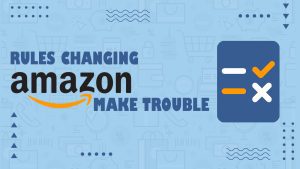You will read about “How to Craft Compelling Blogs for Your Etsy Store”.
The success of your Etsy store depends on your ability to distinguish from the competition in the rapidly changing world of e-commerce. Along with outstanding items, having a great internet presence is essential. Writing interesting and enlightening blogs is one efficient approach to accomplish this. In addition to showcasing your knowledge and enthusiasm, blogs can increase traffic to your store, keep customers interested, and raise its legitimacy. In this thorough manual, we’ll delve into the craft of writing captivating blogs that enthral your readers and aid in the expansion of your Etsy shop.
1. Understand Your Audience
The foundation of any successful blog lies in understanding your target audience. Define who your potential customers are and what they’re interested in. Consider their demographics, preferences, and pain points. By addressing their specific needs, you’ll be able to craft content that resonates with them, ultimately encouraging them to explore your Etsy store.
2. Choose Relevant Topics
Selecting the right topics for your blogs is crucial. You want to cover subjects that are relevant to your products, industry trends, and customer interests. Begin by brainstorming ideas related to your niche, such as how-to guides, product spotlights, and industry insights. Conduct keyword research to identify popular search terms that can guide your content creation.
3. Create Compelling Titles
Your blog titles are the first impression readers have of your content. Craft titles that are not only informative but also intriguing. Use keywords strategically, while also ensuring the titles are catchy and thought-provoking. For instance, “Unlock the Secrets of Handcrafted Jewellery: A Comprehensive Guide” is more engaging than a generic title like “A Guide to Handcrafted Jewellery.”4 Create Compelling Titles
4. Craft Engaging Introductions
Captivate your readers right from the beginning. Your introduction should spark curiosity and clearly outline what your blog will cover. You can start with a relevant anecdote, a surprising fact, or a thought-provoking question. An engaging introduction encourages readers to continue reading and explore your insights.
5. Provide Value Through Informative Content
The heart of your blog lies in the content itself. Offer valuable information, actionable tips, and expert advice. Whether you’re sharing DIY instructions, product care tips, or industry trends, ensure that your content is accurate, well-researched, and genuinely beneficial to your readers.
6. Maintain a Consistent Tone and Style
Consistency in tone and writing style establishes a recognisable brand voice. Whether your tone is friendly, authoritative, or quirky, it should align with your brand’s personality and resonate with your target audience. Consistency instils trust and familiarity, making readers feel comfortable returning to your blog for more.
7. Use Subheadings for Readability
Break up your content into easily digestible sections using subheadings. Subheadings improve the readability of your blogs, allowing readers to scan and find the information they’re most interested in. They also serve as guideposts, leading readers through your content step by step.
9. Incorporate Keywords Naturally
While keywords are essential for search engine optimisation (SEO), their integration should be seamless. Sprinkle relevant keywords throughout your content, but avoid overstuffing. Google values content that reads naturally and provides value to readers. Balancing keyword usage with high-quality content is key to ranking well in search results.
Read More:
A Complete Guide: What is Reserved Inventory on Amazon?
Understanding Amazon’s Stolen Package Policy: Protecting Your Deliveries
Amazon Brand Analytics: A Complete Guide to Harnessing Data Insights
10. Encourage Engagement and Interaction
A successful blog not only imparts knowledge but also encourages engagement. End your blog posts with a call to action (CTA) that prompts readers to leave comments, share their thoughts, or explore your Etsy store. Respond to comments promptly to foster a sense of community and build relationships with your readers.
11. Share on Social Media
Promote your blogs on your social media platforms to broaden their reach. Engage with your audience by posing questions related to your blog content or by running contests related to your products. Social media sharing encourages discussion, increases visibility, and drives traffic to your Etsy store.
12. Analyse and Adapt
Analyze your blog’s performance on a regular basis. Use tracking tools like Google Analytics to monitor statistics like page visits, time spent on the page, and bounce rates.
You may gradually refine your content strategy using the knowledge you gain from this information on the types of materials that resonate most with your audience.
Finally, blogging for your Etsy shop is a great way to engage with customers, demonstrate your subject matter expertise, and improve your shop’s online visibility. You may design blogs that enthral visitors and boost the success of your Etsy business by comprehending your audience, producing educational and interesting material, and implementing SEO best practices. Just keep in mind that writing consistently and with genuine enthusiasm for your craft will encourage readers and clients to trust and support you.





